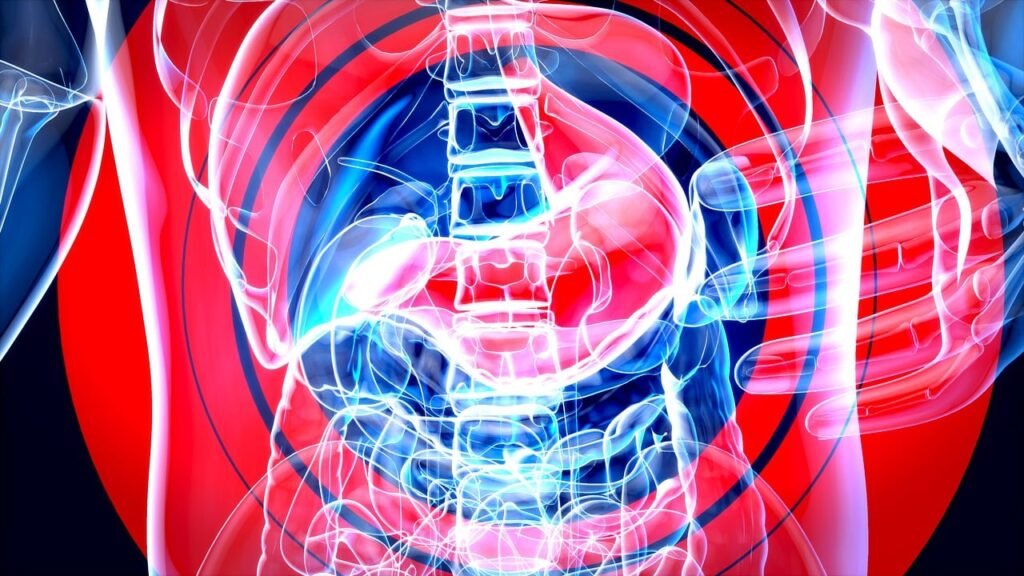Legumes, such as beans, lentils, and chickpeas, have long been recognized for their nutritional value. Not only are they a great source of plant-based protein, but recent research suggests that legumes may also have a positive impact on gut barrier function. The gut barrier acts as a protective shield, preventing harmful substances from entering the bloodstream. By promoting the health and integrity of the gut barrier, legumes may contribute to improved digestion, reduced inflammation, and overall gut health. In this article, we will explore the role that legumes play in promoting gut barrier function and why including them in your diet could be beneficial for your overall well-being.
1. Gut Barrier Function
1.1 Anatomy and Function of the Gut Barrier
The gut barrier refers to the lining of the gastrointestinal tract, which plays a critical role in separating the internal environment of the body from the external environment. Composed of a single layer of epithelial cells, the gut barrier acts as a physical, chemical, and immunological barrier. It allows for the absorption of nutrients while preventing the entry of harmful substances such as pathogens and toxins. This barrier also houses a complex and diverse community of microorganisms, collectively known as the gut microbiota, which further contributes to gut health.
1.2 Importance of a Healthy Gut Barrier
Maintaining a healthy gut barrier is crucial for overall health and well-being. A compromised gut barrier, also known as “leaky gut,” can lead to various health issues. When the gut barrier becomes permeable, harmful substances that should not enter the bloodstream and other tissues can pass through, triggering an immune response and inflammation. This immune activation and chronic inflammation have been associated with several conditions, including gastrointestinal disorders, autoimmune diseases, allergies, and metabolic disorders.
2. Legumes as a Dietary Component
2.1 What are Legumes?
Legumes are a group of plants that belong to the Fabaceae family and are commonly consumed as part of the human diet. Examples of legumes include beans, lentils, chickpeas, peas, and peanuts. Legumes are rich in nutrients, including complex carbohydrates, proteins, dietary fiber, vitamins, and minerals. They have been a staple in many traditional diets around the world for centuries.
2.2 Nutritional Composition of Legumes
Legumes are highly nutritious and offer a wide range of essential nutrients. They are an excellent source of plant-based protein and provide all the essential amino acids required by the body. Legumes are also rich in dietary fiber, particularly soluble fiber, which is known to have various health benefits. They contain important vitamins such as folate, vitamin B6, and vitamin C, as well as minerals like iron, magnesium, and potassium. Moreover, legumes are low in fat and provide a good balance of complex carbohydrates, making them a healthy choice for a well-rounded diet.

This image is property of pixabay.com.
3. Role of Legumes in Gut Health
3.1 Fiber Content
One of the key factors contributing to the beneficial role of legumes in promoting gut barrier function is their high fiber content. Legumes are an excellent source of both soluble and insoluble fiber, with soluble fiber being particularly beneficial for gut health. Soluble fiber acts as a prebiotic, helping to stimulate the growth and activity of beneficial bacteria in the gut. These beneficial bacteria, such as Bifidobacteria and Lactobacilli, play a significant role in maintaining a healthy gut barrier and overall gut health.
3.2 Prebiotic Properties
In addition to their fiber content, legumes also possess prebiotic properties. Prebiotics are non-digestible compounds that selectively stimulate the growth and activity of beneficial bacteria in the gut. Legumes contain specific carbohydrates, such as oligosaccharides, which are not fully broken down during digestion and can serve as food for beneficial bacteria. By promoting the growth of these bacteria, legumes contribute to a healthy gut microbiota and enhance gut barrier function.
4. Gut Barrier Dysfunction
4.1 Causes of Gut Barrier Dysfunction
Several factors can contribute to gut barrier dysfunction. A poor diet high in processed foods, added sugars, and unhealthy fats can disrupt the balance of the gut microbiota and lead to inflammation, ultimately affecting the integrity of the gut barrier. Chronic stress, lack of sleep, excessive alcohol consumption, and the use of certain medications like nonsteroidal anti-inflammatory drugs (NSAIDs) and antibiotics can also impair gut barrier function. Additionally, certain medical conditions, such as inflammatory bowel disease (IBD) and celiac disease, can compromise the integrity of the gut barrier.
4.2 Effects of Gut Barrier Dysfunction
When the gut barrier becomes compromised, harmful substances can enter the bloodstream, leading to the activation of the immune system and the release of pro-inflammatory molecules. This chronic inflammation can contribute to the development of various health conditions, including gastrointestinal disorders like irritable bowel syndrome (IBS), autoimmune diseases, allergies, metabolic disorders, and even mental health issues like depression and anxiety. It is therefore crucial to maintain a healthy gut barrier to prevent these adverse effects.

This image is property of pixabay.com.
5. Legumes and Gut Barrier Function
5.1 Gut Microbiota Modulation
Legumes have been shown to modulate the gut microbiota, promoting the growth of beneficial bacteria and improving gut barrier function. The fiber content of legumes serves as a fuel source for beneficial bacteria, allowing them to thrive and produce beneficial metabolites like short-chain fatty acids (SCFAs). SCFAs play a crucial role in maintaining gut health by providing energy for the cells lining the colon and promoting the integrity of the gut barrier. A diverse and balanced gut microbiota, supported by legume consumption, can enhance gut barrier function and protect against gut barrier dysfunction.
5.2 Anti-inflammatory Effects
Legumes also exhibit anti-inflammatory effects that contribute to maintaining a healthy gut barrier. The high fiber content of legumes, particularly soluble fiber, has been linked to reduced levels of inflammatory markers in the body. This can help prevent chronic inflammation and reduce the risk of gut barrier dysfunction. Additionally, legumes contain various bioactive compounds, such as polyphenols and flavonoids, that possess anti-inflammatory properties. These compounds can help combat inflammation in the gut, further supporting gut barrier function.
6. Impact of Legume Consumption
6.1 Human Studies
Several human studies have investigated the impact of legume consumption on gut health and gut barrier function. A randomized controlled trial found that consuming legumes for eight weeks significantly increased the abundance of beneficial bacteria and improved gut barrier function in overweight individuals. Another study showed that including legumes in the diet improved gut microbiota diversity and increased levels of SCFAs. These findings suggest that regular legume consumption can positively impact gut health and promote a healthy gut barrier in humans.
6.2 Animal Studies
Animal studies have further supported the role of legumes in promoting gut barrier function. In a study conducted on mice, supplementation with lentil fiber improved the gut barrier function by increasing the expression of molecules involved in maintaining tight junction integrity. Another animal study demonstrated that feeding rats a diet enriched with legumes led to reduced gut inflammation and enhanced gut barrier function compared to a control diet without legumes. These findings highlight the potential of legumes in maintaining gut health and preventing gut barrier dysfunction in animals.

This image is property of pixabay.com.
7. Other Benefits of Legumes
7.1 Weight Management
In addition to promoting gut barrier function, legumes have been associated with weight management. Including legumes as part of a balanced diet can help increase feelings of fullness due to their high fiber and protein content. This can ultimately lead to a reduced calorie intake and support weight loss or weight maintenance efforts. Legumes also have a low glycemic index, meaning they have a minimal impact on blood sugar levels, making them an excellent choice for individuals managing diabetes or those seeking to stabilize their blood sugar levels.
7.2 Heart Health
Legumes have been recognized for their potential cardiovascular benefits. They are a rich source of soluble fiber, which can help reduce cholesterol levels in the blood. By decreasing low-density lipoprotein (LDL) cholesterol, often referred to as “bad” cholesterol, and increasing high-density lipoprotein (HDL) cholesterol, known as “good” cholesterol, legumes can contribute to heart health. The presence of phytochemical compounds in legumes, such as flavonoids and saponins, also has been shown to have anti-inflammatory and antioxidant properties that support cardiovascular health.
8. Incorporating Legumes into Your Diet
8.1 Cooking Methods
There are numerous ways to incorporate legumes into your diet. One common method is boiling them until they become tender, which can be done for most legume varieties. This allows for the incorporation of legumes into salads, soups, stews, and side dishes. Another approach is to soak legumes overnight before cooking, which can help reduce cooking time. Legumes can also be roasted or sprouted, creating flavorful and nutritious options. Experimenting with different cooking methods can help enhance the taste and texture of legumes to suit your preferences.
8.2 Recipe Ideas
Here are a few recipe ideas to inspire you to include legumes in your diet:
-
Chickpea and vegetable curry: Sauté onions, garlic, ginger, and spices in a pan, then add cooked chickpeas, vegetables of your choice, and coconut milk. Simmer until the flavors are well combined, and serve with brown rice or whole wheat naan bread.
-
Lentil salad: Cook lentils until tender and mix them with chopped vegetables like tomatoes, cucumbers, and bell peppers. Drizzle with olive oil and lemon juice, and season with herbs and spices for a refreshing and nutritious salad.
-
Black bean tacos: Mash cooked black beans with spices like cumin, chili powder, and garlic powder. Spread the bean mixture on corn tortillas, and top with avocado, salsa, and fresh cilantro for a quick and satisfying meatless meal.

9. Potential Considerations
9.1 Digestive Issues
While legumes offer numerous health benefits, they can also cause digestive discomfort in some individuals. The oligosaccharides present in legumes can be difficult to digest, leading to gas, bloating, and abdominal discomfort. To minimize these effects, it is recommended to soak legumes before cooking and gradually increase their consumption to allow the body time to adjust. Additionally, cooking legumes thoroughly can help break down these complex carbohydrates and make them easier to digest.
9.2 Allergies
Although rare, legume allergies can occur in certain individuals. Peanut allergies, in particular, are among the most common food allergies. It is important to be aware of any known allergies and avoid consuming legumes if you are allergic to them. If you suspect an allergy, it is best to consult with a healthcare professional for proper diagnosis and guidance.
10. Conclusion
10.1 Summary of Legumes’ Role in Promoting Gut Barrier Function
Legumes play a significant role in promoting gut barrier function due to their fiber content and prebiotic properties. The fiber found in legumes serves as a fuel source for beneficial bacteria in the gut, contributing to a diverse and balanced gut microbiota. Legumes also exhibit anti-inflammatory effects and provide essential nutrients that support overall gut health. Through their impact on gut barrier function, legumes help prevent gut barrier dysfunction and reduce the risk of inflammation-related health issues.
10.2 Future Research Directions
While current research suggests the beneficial role of legumes in promoting gut barrier function, further studies are needed to better understand the mechanisms and potential long-term effects. Future research should focus on investigating the optimal amounts and types of legumes to consume for maximal gut health benefits. Additionally, exploring the impact of legume consumption on specific populations, such as individuals with gut disorders or compromised gut barrier function, would provide further insights into their potential therapeutic applications.


